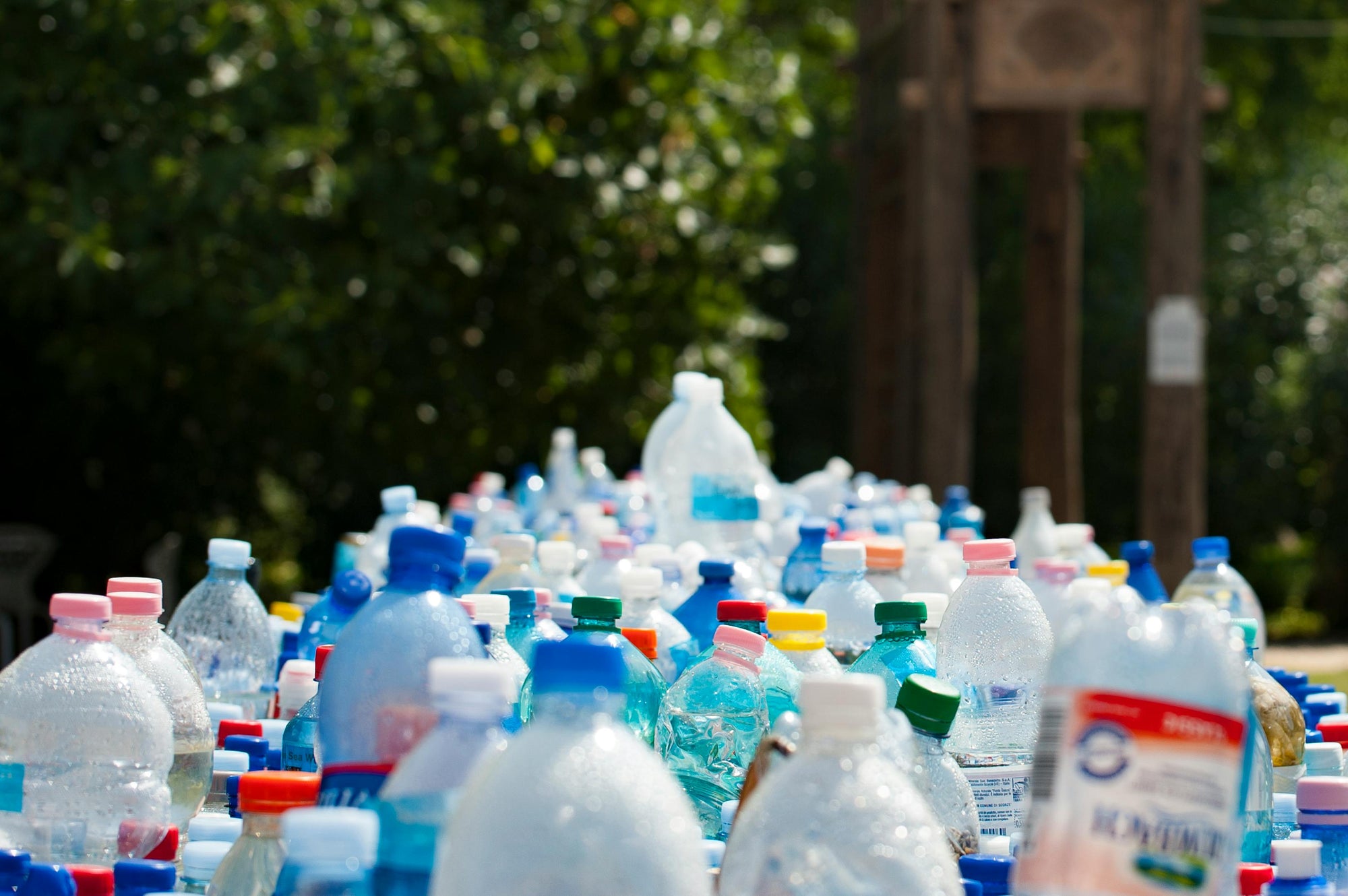In the realm of sustainable fashion, there's a growing emphasis on eco-friendly materials and practices. Recycled PET clothing, touted as an environmentally conscious option, has gained traction in recent years. Plastic recycled into clothing? It sounds great. But, if you take a closer look, you’ll find that not all sustainable clothing is created equal.
In this blog, we'll delve into the world of recycled PET clothing, exploring what it is, why it's used, its rise in popularity, and the hidden drawbacks that make it a questionable choice for both consumers and the environment. Join us as we unravel the truth behind recycled PET clothing and discover alternative paths to truly sustainable and eco-friendly fashion.
What is recycled PET?
Recycled PET, or polyethylene terephthalate, is a synthetic fiber derived from recycled plastic bottles. Through a process of shredding, melting and spinning, plastic bottles are transformed into polyester yarns. These yarns are then used to produce clothing and textiles.
On the surface, this may seem like a commendable effort to repurpose waste and reduce environmental impact.
The rise of recycled PET fashion
Recycled PET clothing is embraced by many brands and consumers as a way to lessen reliance on virgin polyester, which is derived from non-renewable fossil fuels. By using recycled PET, companies aim to reduce the demand for new raw materials, lower energy consumption, and divert plastic waste from landfills and oceans.
This is the story around PET.
The rise of recycled PET in clothing
The popularity of recycled PET clothing surged in the early 2000s, driven by a growing awareness of environmental issues and a desire for more sustainable fashion options. Brands sought to capitalize on this trend by promoting recycled PET as an eco-friendly alternative to traditional polyester.
These messages – reducing waste, repurposing plastic, saving the oceans – are the main selling points of these products. Major brands like Nike, Gap, H&M and Adidas also choose it because it’s cheaper than virgin polyester.
The story of reducing plastic waste is an easy and emotional selling point. We’ve all seen pictures of oceans clogged by plastic bottles, or the presence of plastic in seemingly untouchable places, like rivers and desserts in the middle of nowhere.
But if you’re really trying to be thoughtful about your clothing choices and shop sustainable, eco-friendly fashion, PET clothing is not the answer .
Why recycled PET Clothing is not the best sustainable choice
Despite its eco-friendly image, recycled PET clothing comes with its own set of drawbacks.
Energy consumption
PET production is highly energy-intensive, requiring substantial amounts of electricity and fossil fuels. The manufacturing process involves heating and melting raw materials, which consumes significant energy resources, contributing to greenhouse gas emissions and climate change.
Unless the factories are being run on sustainable energy like solar or wind, then there’s a lack of sustainability right from the start.
Resource depletion
The production of PET relies on non-renewable resources such as crude oil and natural gas. Yes, less than natural polyester, but the amount is not zero. As these resources are finite, their extraction and use for PET production contribute to resource depletion and exacerbate environmental concerns associated with fossil fuel extraction.
Again, natural fabrics are a great choice to reduce the consumption of non-renewable resources.
Water usage
PET production consumes large quantities of water, both directly in the manufacturing process and indirectly through the extraction and processing of raw materials. Water is used for cooling, cleaning, and as a solvent in various stages of production. Water scarcity is a problem for all of us and this is not a small impact.
Chemical pollution
The plastic in bottles needs to be broken down for the production of PET materials. This process involves the use of various chemicals, including catalysts, solvents, and additives. These chemicals can pose environmental risks if released into the air, water, or soil during manufacturing or disposal processes. Additionally, the byproducts of PET production may include toxic substances that can harm ecosystems and human health.
Waste generation
PET production generates waste at various stages of the manufacturing process, including off-cuts, scraps, and byproducts. Disposal of this waste can pose challenges, as it may contribute to landfill pollution or require energy-intensive recycling processes to mitigate environmental impacts.
Aside from the level of production waste created, the durability and longevity of recycled PET clothing can be lower than natural fibers or higher-quality sustainable materials. This means that the clothing can wear and tear faster than natural clothing, ultimately creating just as much clothing waste. Buying higher quality, natural fiber clothing can reduce your fashion waste and footprint way more.
Carbon footprint
PET production contributes to the carbon footprint of the fashion industry and other sectors that rely on PET-based products. The extraction, refining, and transportation of raw materials, as well as the manufacturing and distribution of PET products, all generate greenhouse gas emissions that contribute to climate change.
Environmental impact of end products
Beyond the production phase, PET-based products can also have environmental impacts throughout their lifecycle.
The microplastics in PET clothing will shed the same way synthetic fibers do. Even if plastic is repurposed into clothing, it continues to pollute our water and contribute to marine degradation. They pose a different threat to ecosystems and aquatic life than regular plastic, but the threat is just the same.
Then, when you’re done with the clothes, you throw them out, so they end up in the garbage anyway. Plastic bottles are able to be recycled into different products or new bottles.
We love the idea of finding ways to give plastic a second life. But recycling it into clothing is not the answer.
Shopping for more sustainable eco-friendly fashion
While recycled PET clothing may seem like a step in the right direction, consumers have other, more sustainable options to consider.
Look for fashion that is sustainable beyond just material material. Anne Mulaire for example, prioritizes eco-friendly materials on top of production practices. And if you want to focus on material, you can choose clothing made from organic cotton, linen, hemp, or Tencel, which have lower environmental footprints than PET clothing and biodegrade more readily.
Embrace timeless styles and durable designs that stand the test of time, reducing the need for frequent replacements and minimizing waste. By making informed choices and supporting truly sustainable fashion, we can collectively move towards a greener, more responsible future.
PET Clothing: Not the best sustainable fashion choice
While the intentions behind recycled PET clothing are noble, its sustainability claims may not hold up under closer scrutiny. As conscientious consumers, it's crucial to educate ourselves and explore alternative paths to eco-friendly fashion.
By challenging the status quo and demanding greater transparency and accountability from brands, we can drive positive change in the fashion industry and pave the way for a more sustainable tomorrow. Be smart about how you shop and read beyond the marketing. Not all sustainable efforts are equal.


